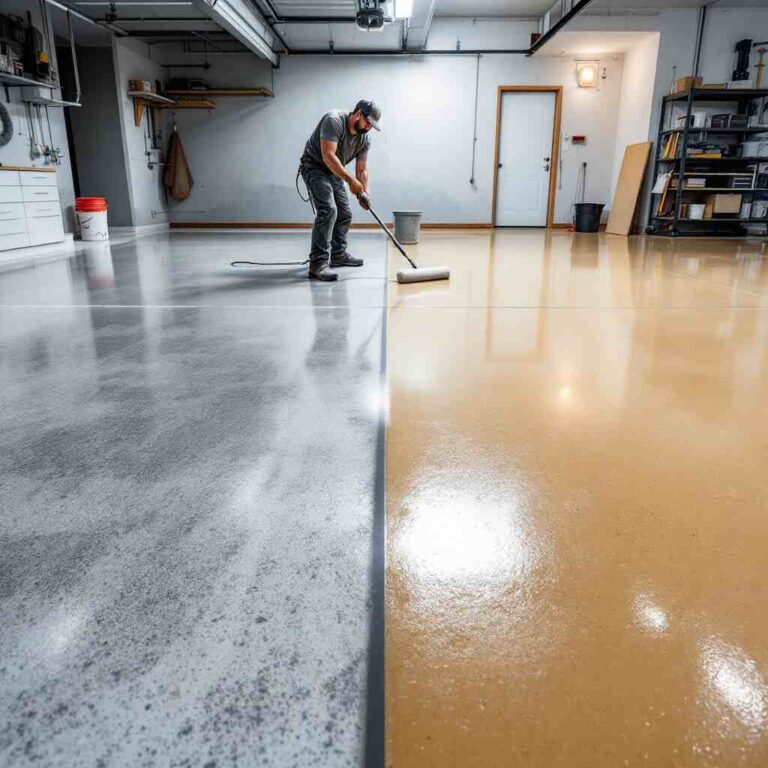Sealing a concrete garage floor is one of the best ways to protect your investment while enhancing the look and longevity of your garage. Whether you’re dealing with stains, cracks, or general wear and tear, sealing your concrete floor can provide the durability and aesthetic appeal you’re looking for.
Why Sealing Your Concrete Garage Floor Matters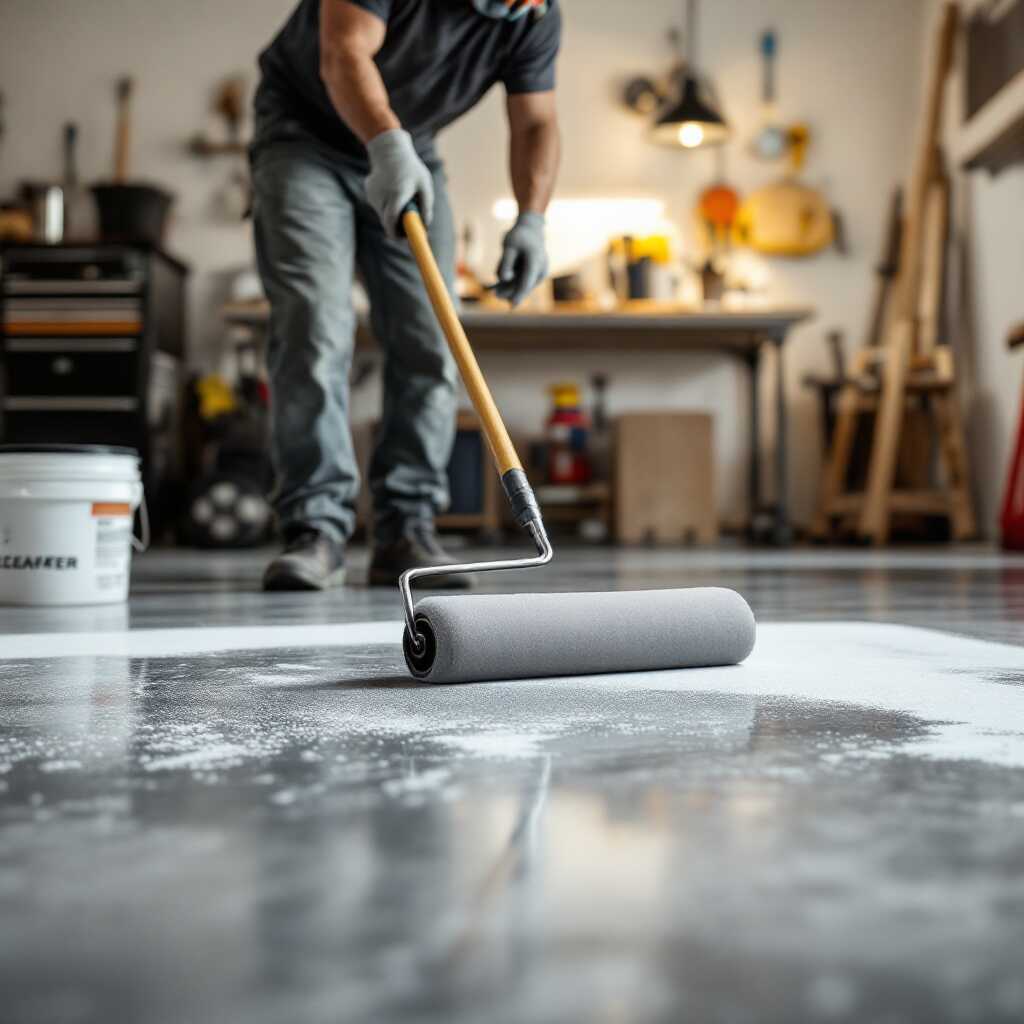
Concrete garage floors endure a lot – from heavy vehicles and tools to oil spills and harsh chemicals. Without proper protection, this wear and tear can take a toll. Let’s explore why sealing your garage floor is so important.
Protection Against Stains and Damage
Concrete is porous, absorbing liquids like oil, grease, and water. Over time, these substances can seep deep into the surface, causing unsightly stains and even structural damage. A sealed floor creates a protective layer, preventing these liquids from penetrating the surface.
Preventing Concrete Dust and Simplifying Cleaning
Unsealed concrete floors can produce dust over time, making cleaning a hassle and impacting the air quality in your garage. A sealed floor eliminates this issue, making sweeping and mopping a breeze.
Enhanced Durability
Sealing significantly extends the lifespan of your garage floor by protecting it from abrasion, cracks, and the corrosive effects of de-icing salts. This is especially crucial if you live in areas with harsh winters.
Mold Inhibition and Color Maintenance
Moisture can lead to mold growth, especially in humid conditions. Sealing provides a waterproof barrier that prevents mold and keeps your floor looking fresh by maintaining its color.
Improved Safety
Sealed floors often include anti-slip properties, reducing the risk of slips and falls. They also cover imperfections, making your garage safer and more aesthetically pleasing.
Understanding the Types of Concrete Garage Floor Sealers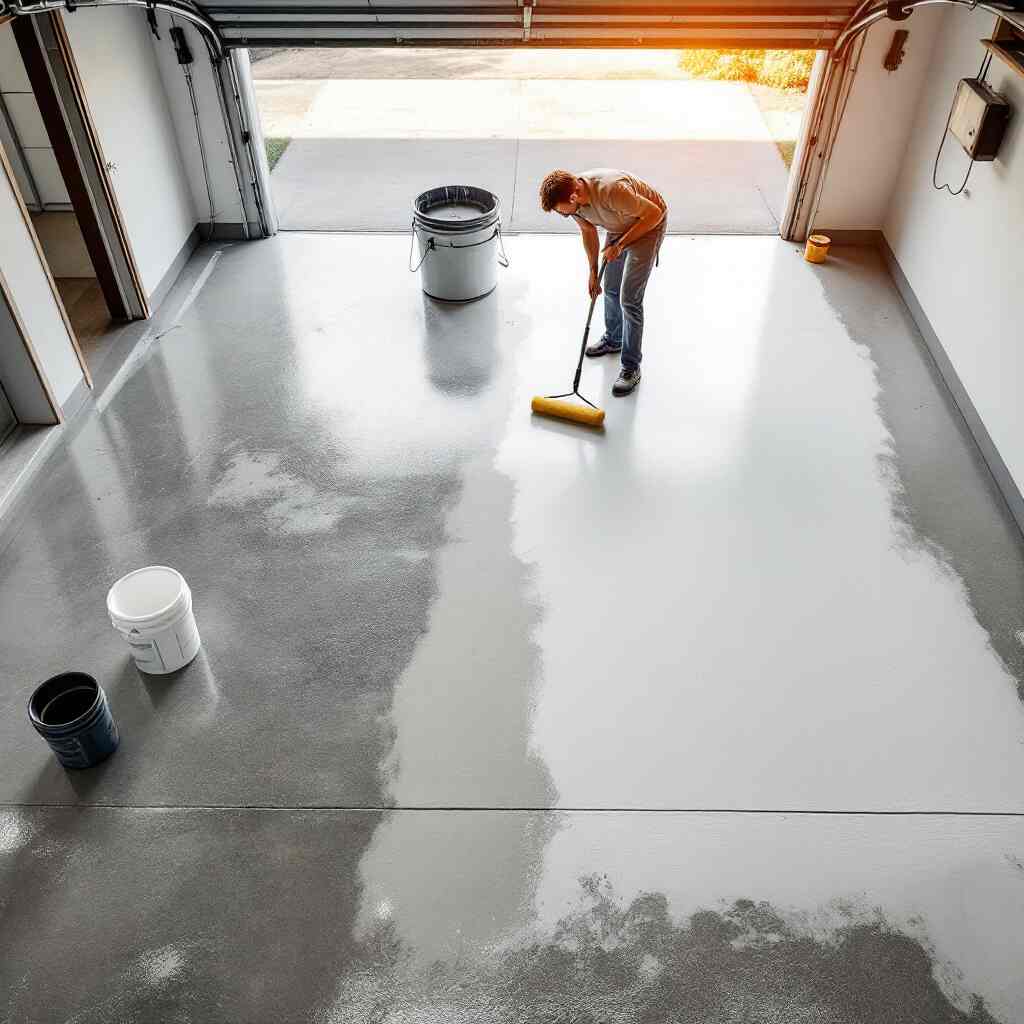
Choosing the right type of sealer is a critical step in this process. Let’s dive into the most common options and their features.
You may also read (is it possible to add a garage to my house).
Acrylic Sealers
Acrylic sealers are one of the most popular options due to their ease of application and affordability. They provide a glossy finish, enhancing the floor’s appearance. However, they offer basic protection and are best suited for garages with light use.
Epoxy Sealers
Epoxy sealers are highly durable and chemical-resistant, creating a strong, waterproof barrier. They’re ideal for heavy-use garages or regularly exposed to oil and grease. Epoxy provides a polished, professional look but requires careful application.
Polyurethane Sealers
Polyurethane sealers are an excellent choice for superior abrasion resistance and UV stability. They’re long-lasting and can withstand heavy traffic, but they are more expensive than other options.
Penetrating Sealers (Silane/Siloxane)
If you prefer a natural look, penetrating sealers are your best bet. They provide invisible protection by soaking into the concrete and repelling water, chemicals, and stains without altering the surface’s appearance.
Densifiers
Densifiers strengthen concrete by filling its pores, reducing dusting, and increasing durability. They’re often applied as a base layer before other sealers.
Comparison Table: Types of Sealers
Sealer Type Features Pros Cons Best Use Cases
Acrylic Quick-drying, glossy finish Affordable, easy to apply Less durable, needs frequent reapplication Light-use garages, aesthetics.
Epoxy Chemical-resistant, waterproof Durable, polished look Requires preparation, higher cost Heavy-use garages, oil-prone areas.
Polyurethane UV stable, abrasion-resistant Long-lasting, excellent protection Expensive, harder to apply High-traffic garages
Penetrating (Silane) Invisible protection and water repellent Maintain a natural look and are eco-friendly. Limited protection against abrasion Natural-looking finishes.
Densifiers strengthen concrete, reduce dusting, and increase durability. They require follow-up sealing as a base layer.
Tools and Materials Needed for Sealing a Concrete Garage Floor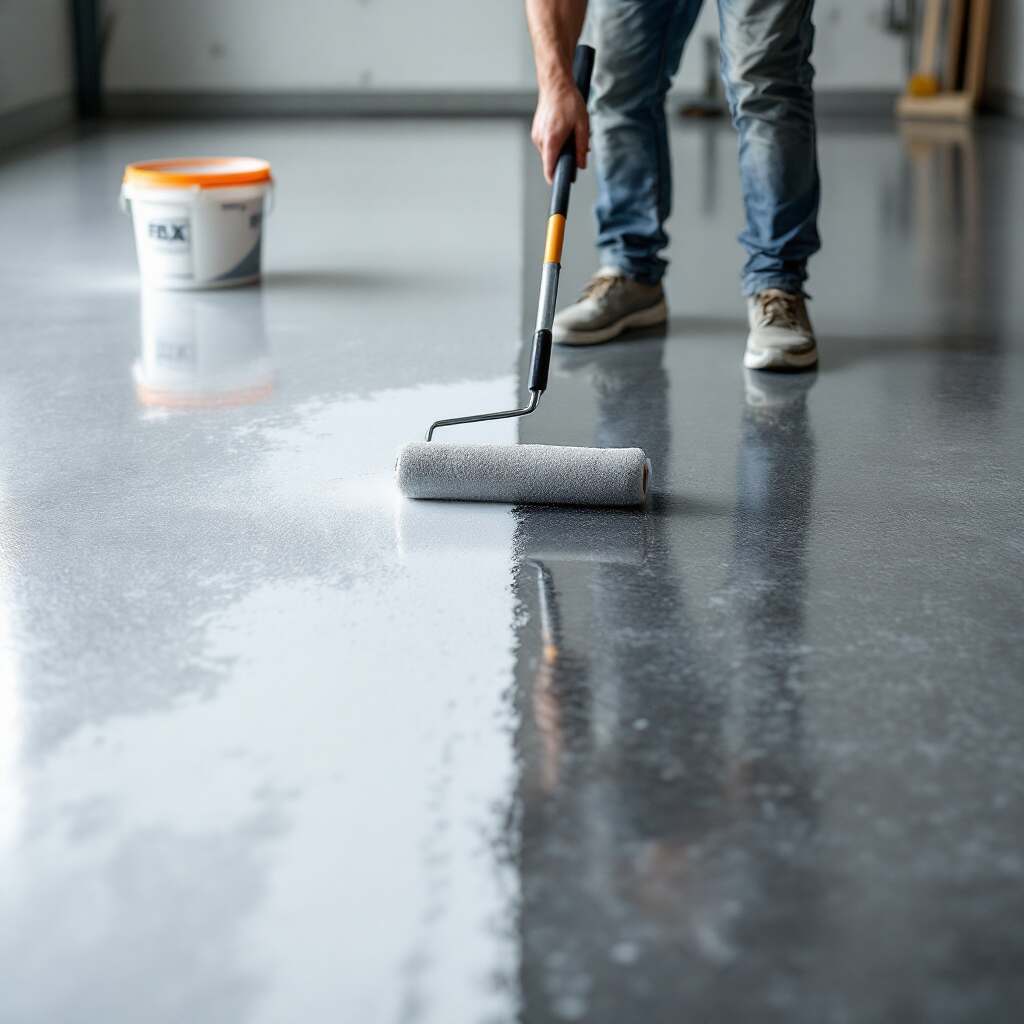
Before getting started, you’ll need to gather the right tools and materials to ensure a smooth sealing process.
Essential Tools
- Putty knife (for scraping debris)
- Degreaser (to clean oily spots)
- Wet mop and bucket
- Pressure washer (for deep cleaning)
- Concrete filler (to repair cracks and holes)
- Applicators: roller, brush, or sprayer
Safety Gear
- Gloves
- Goggles
- Respirator mask (especially if using solvent-based sealers)
Choosing the Right Sealer
Select a sealer based on your garage’s needs. For example:
- Epoxy: Ideal for heavy-duty use.
- Acrylic: Best for aesthetic appeal and light use.
- Penetrating sealers: Perfect for a natural look.
Step-by-Step Guide: How to Seal a Concrete Garage Floor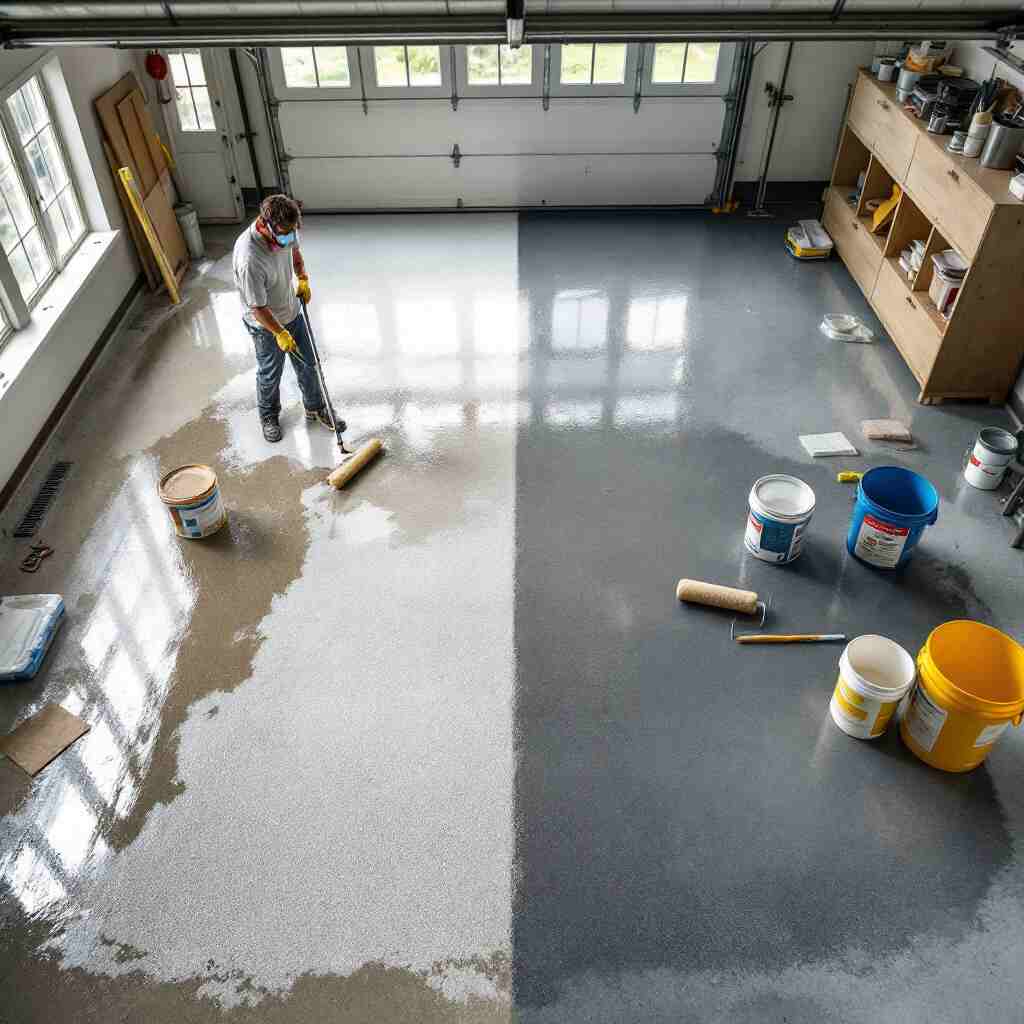
Sealing a garage floor involves preparation, application, and proper drying. Follow these detailed steps for a professional finish.
Preparation is Key
- Clear the Garage: Remove all items from the floor, including skirting boards if necessary.
- Clean Thoroughly: Sweep, vacuum, and mop to remove dust and debris.
- Degrease Spots: Scrub oily areas with a degreaser and wire brush.
- Rinse and Dry: Rinse the floor with a pressure washer and let it dry for at least 24 hours.
- Repair Cracks: Use concrete filler to patch cracks and holes, smoothing them with a putty knife.
Surface Profiling and Etching
- Why Etching Matters: Etching creates a rough surface that allows the sealer to adhere properly.
- How to Etch: Apply an etching solution (like muriatic acid) evenly, following the manufacturer’s instructions.
- Rinse Thoroughly: Remove all residue and let the floor dry again.
Application of the Sealer
- Strip Old Sealer: If the floor has an existing sealer, remove it with a chemical stripper.
- Apply the First Coat: Use a roller, brush, or sprayer to apply a thin, even coat.
- Drying Time: Allow the first coat to dry per the manufacturer’s instructions.
- Apply a Second Coat: Apply the second coat perpendicularly for even coverage.
- Cure: Wait 24–72 hours for the sealer to fully cure before using the garage.
Common Mistakes to Avoid
- Skipping Preparation: Failing to clean or dry the floor can lead to poor adhesion.
- Over-Application: Applying too much sealer can cause peeling or bubbling.
- Ignoring Instructions: Always follow the manufacturer’s guidelines for the best results.
Maintenance Tips for a Sealed Concrete Garage Floor
- Sweep and mop regularly to keep the floor clean.
- Avoid harsh chemicals that can break down the sealer.
- Reapply the sealer every 2–5 years based on usage.
- Promptly repair new cracks or wear to maintain protection.
You may also read (house and a garage).

